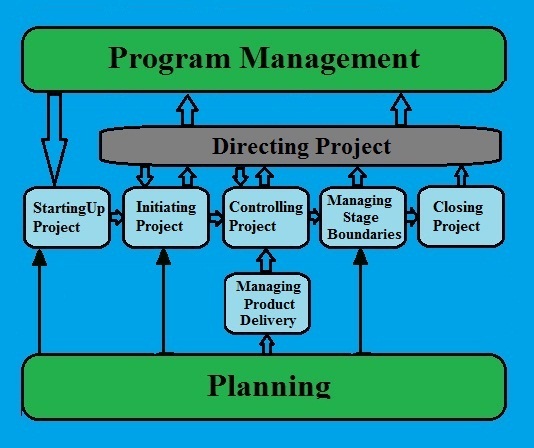Project Audit Checklist – The Key Steps of the Audit Process
 Project audit is a continuous process that starts at the execution stage of a project and goes on till the project’s end. It aims to check the project against success criteria and confirm that this project remains effective and follows documented quality standards and requirements. The audit process helps complete various projects on time, on budget and as per user requirements. In this article we talk about the key steps of the project audit process. We explain and define the process and give the audit checklist.
Project audit is a continuous process that starts at the execution stage of a project and goes on till the project’s end. It aims to check the project against success criteria and confirm that this project remains effective and follows documented quality standards and requirements. The audit process helps complete various projects on time, on budget and as per user requirements. In this article we talk about the key steps of the project audit process. We explain and define the process and give the audit checklist.
Definition
In order to succeed, every organization needs to continuously make investments in sustaining, growing and transforming its business activities. Project management serves as the ideological framework and the implementation mechanism for administering and controlling the various investment initiatives, which appear to be projects. But only well-managed and controlled projects will provide the organization with significant opportunities to create value.
A well-managed project is a project that is performed in line with the constraints of Time, Cost and Quality. This project reaches success if there is an effective audit process applied to project activities and tasks. Such a process can be defined as follows:
Project Audit is an the systematic, often iterative activity of examining and analyzing a project to identify and determine any issues, concerns, challenges and opportunities and their reasons, and to develop recommendations about how to address the problems and keep the project successful.
The ultimate goal of the audit process is to maximize the success of a project. The process is intended to complete the following general objectives:
- Ensure that project decision making is effective (every decision made produces a desire outcome)
- Project activities are adequately performed and managed
- Project governance and risk management meet business requirements
All these objectives are often managed under a project audit programme, which defines and runs the audit process. Such a programme is a detailed plan that represents step-by-step procedures to be followed by auditors in carrying out the process.
Checklist
Below we present a checklist of the general steps of the project audit process.
Step 1. Success Criteria Development
- Run interviews with the project sponsor and project manager to determine and agree on the project’s success criteria.
- Be sure the criteria are established in line with the business requirements
- Develop a checklist that includes questions regarding the success criteria
- Send the checklist to the members of the core team and to selected stakeholders who are directly involved in the project
- Assign a facilitator or auditor who will interview the team
- Collect the responds from the team
- Focus on their viewpoints regarding the project’s successes, failures, missed opportunities and challenges
- Develop an audit questionnaire that includes open-ended questions
- Send the questionnaire to the team
- Organize a meeting with the team to discuss their thoughts and ideas regarding the project’s current state
- Discuss and try to address major project issues, concerns and challenges during the meeting
- Identify and agree on best practices of teamwork and collaboration
- Close the meeting and confirm the first step of the project audit checklist is done
Step 2. Analysis
- Carry out individual research interviews with the key stakeholders (project sponsor, project manager, team) to identify and discuss the past, present and future problems, challenges and opportunities of the project
- Interview the external stakeholders (contractors, vendors, suppliers) to discuss the same point
- Develop a report that summarizes the discussions and specifies the general problems of the project
- Perform the root-cause analysis to identify and gain insight into the core reasons of the problems
- Audit every problem to determine its severity and impact on the project
- Set priority for the problems, depending on their impacts and severity
- Combine the prioritized problems into a list
- Organize the list by the following problem categories:
- Business requirements
- Team-related
- Scope
- Documentation
- Milestones and deliverable status
- Risks and contingency
- Issues and changes
- Quality
- Review each of the problem categories to identify and determine which project expectations have been met and which ones remain unsatisfied and unmet
- Review the project quality plan to identify what solutions can be applied and what opportunities can be realized
- Meet the key stakeholders to agree upon other possible solutions (which have not been specified by the quality plan) to the problems
- Define and record the lessons learned that can improve the quality and performance of other future projects within the same organization
- Confirm the second step of the project audit checklist is finished
Step 3. Reporting
- Collect all the records made during all the interviews and meetings conducted at the previous steps listed in this project audit checklist
- Collect the information obtained from the questionnaires
- Combine the data from project documentation
- Identify the solution that have been defined by the quality plan and successfully applied to addressing the problems
- Identify the opportunities that have been successfully realized
- Identify other solutions that have been implemented
- Make a list of all the problems that have been successfully resolved
- Develop a project audit report
- Add recommendations to the report
- Mention about the details of the audit process
- Submit the report to the senior management
- Confirm the third step of the project audit checklist is completed.














